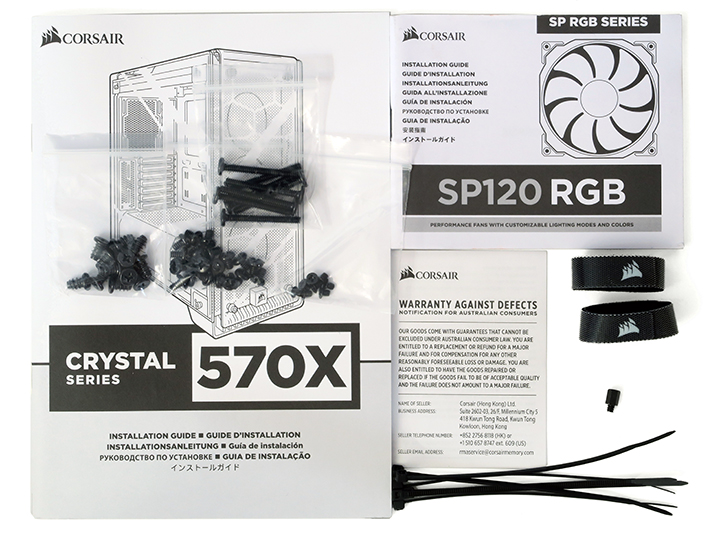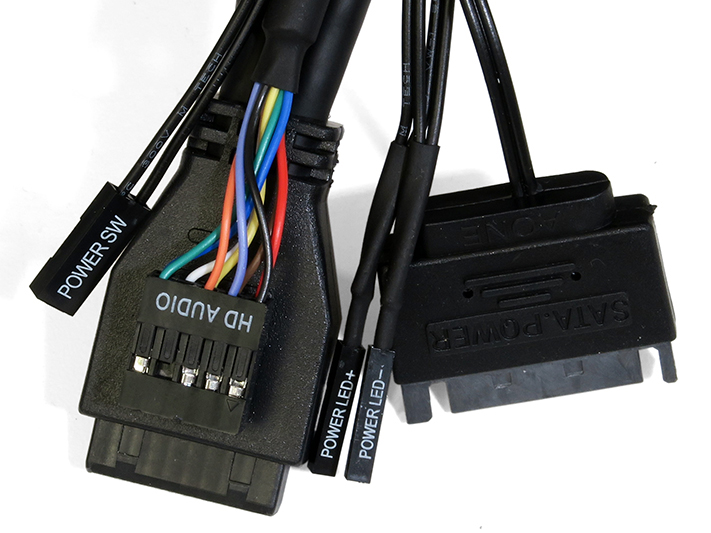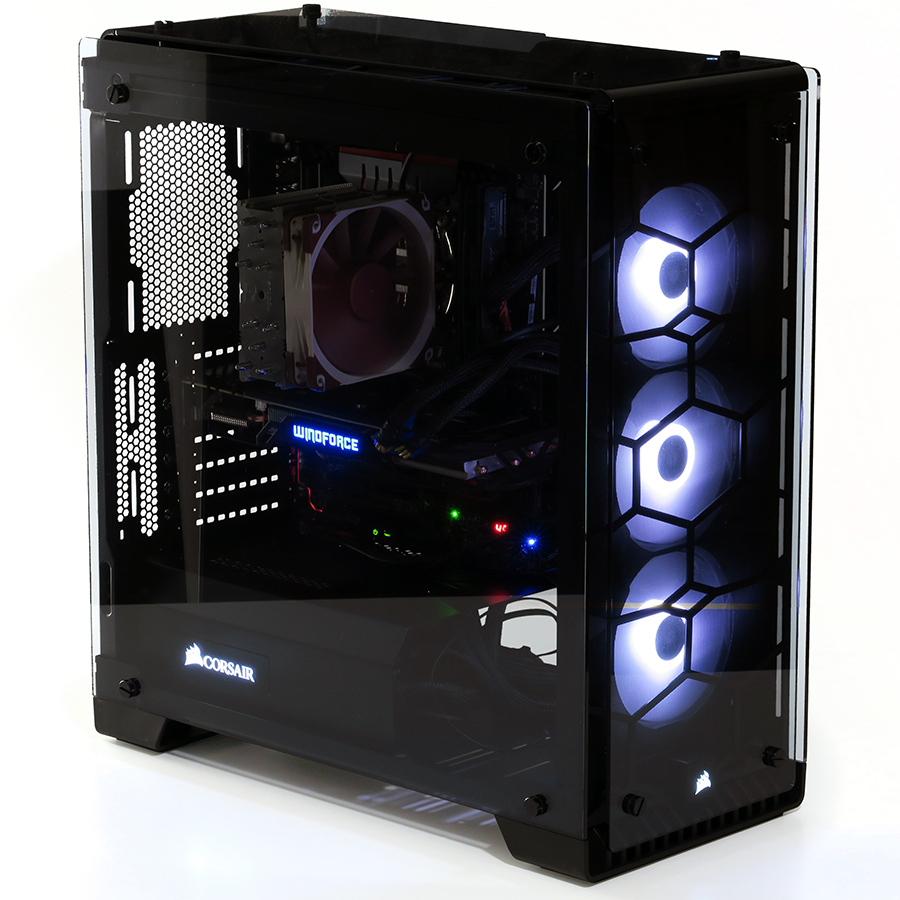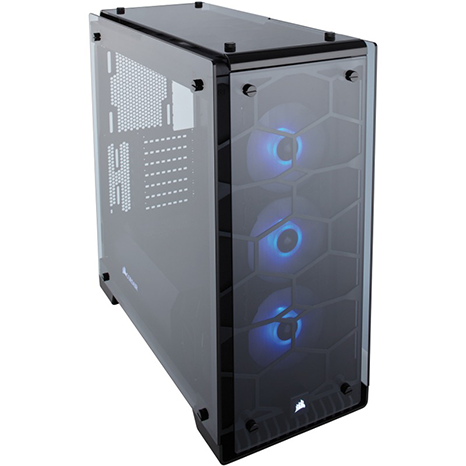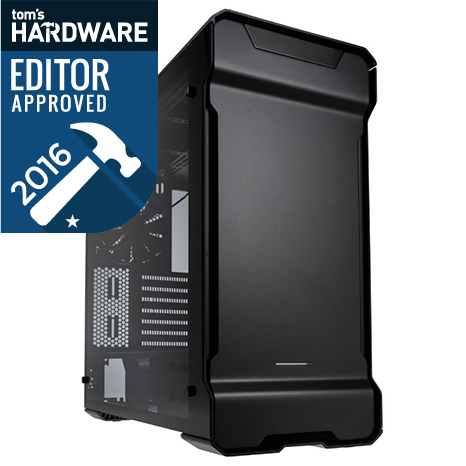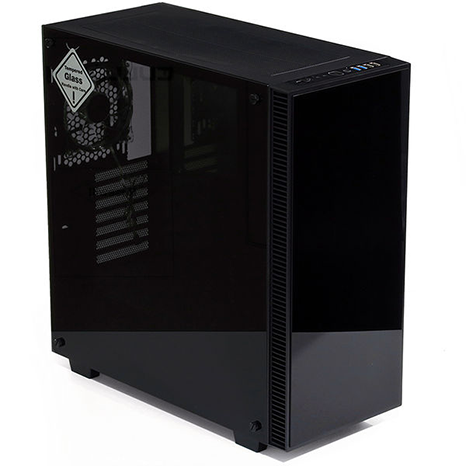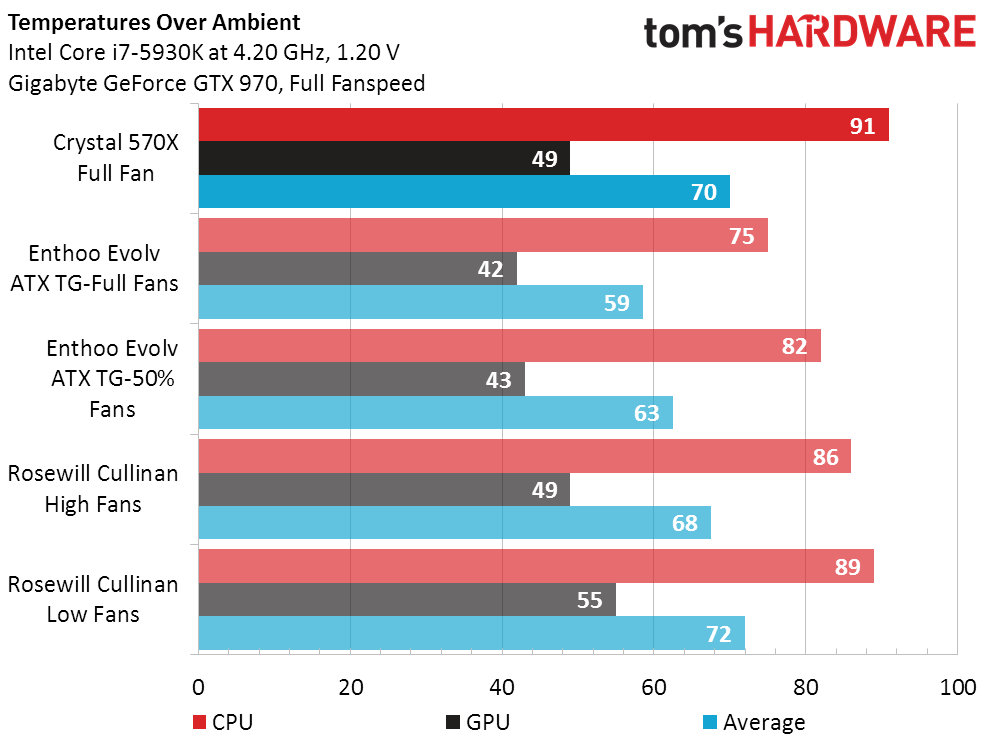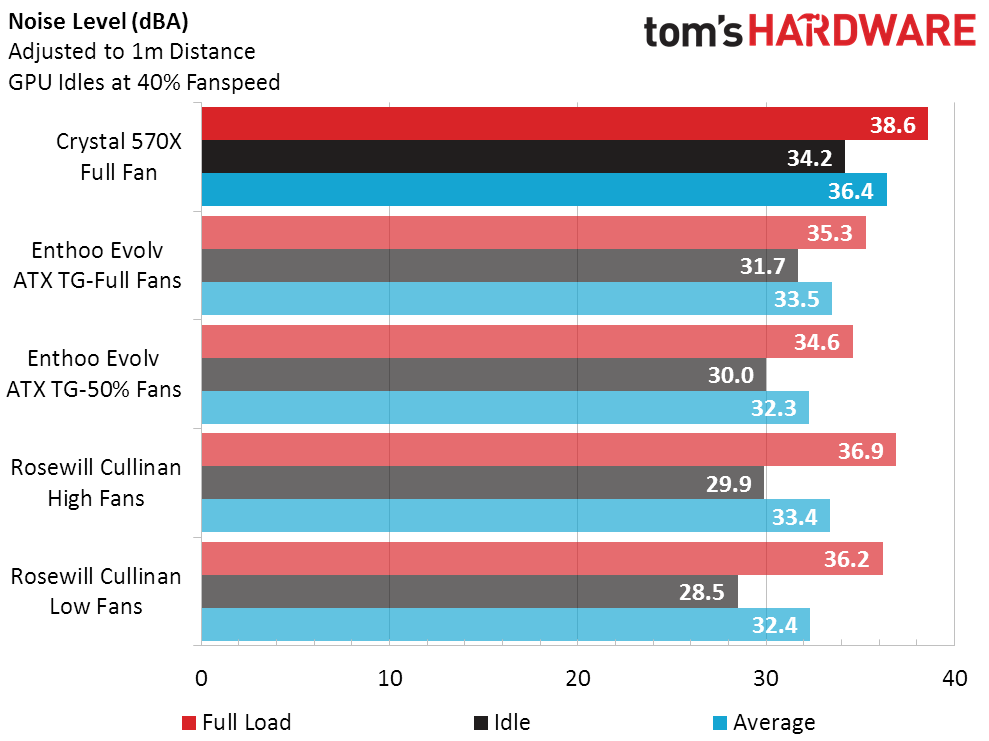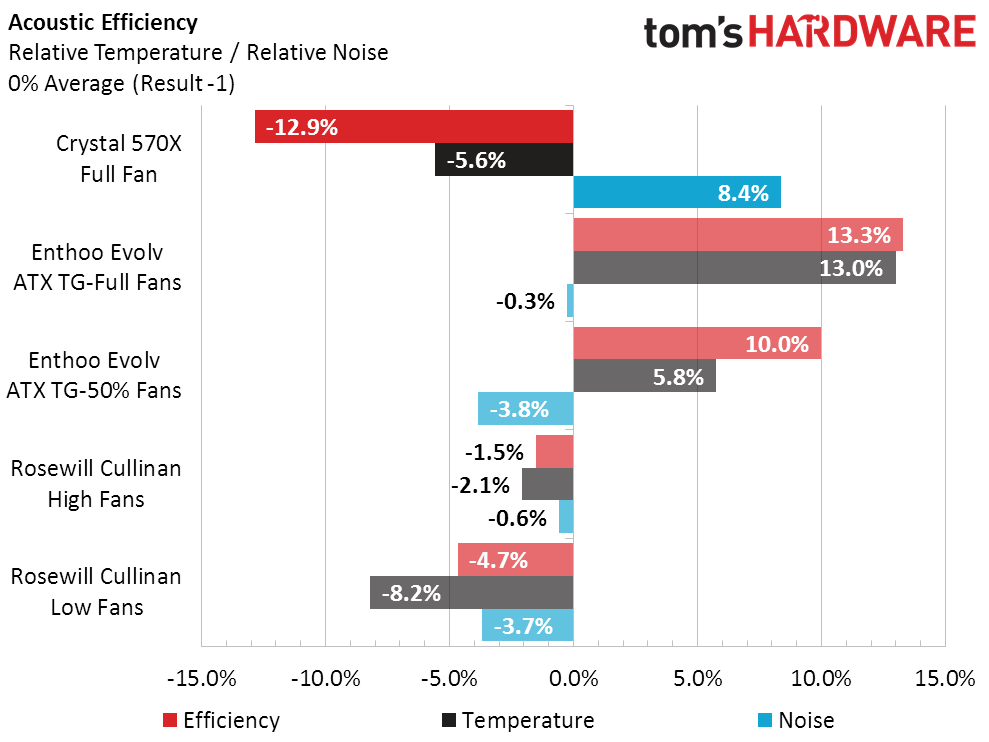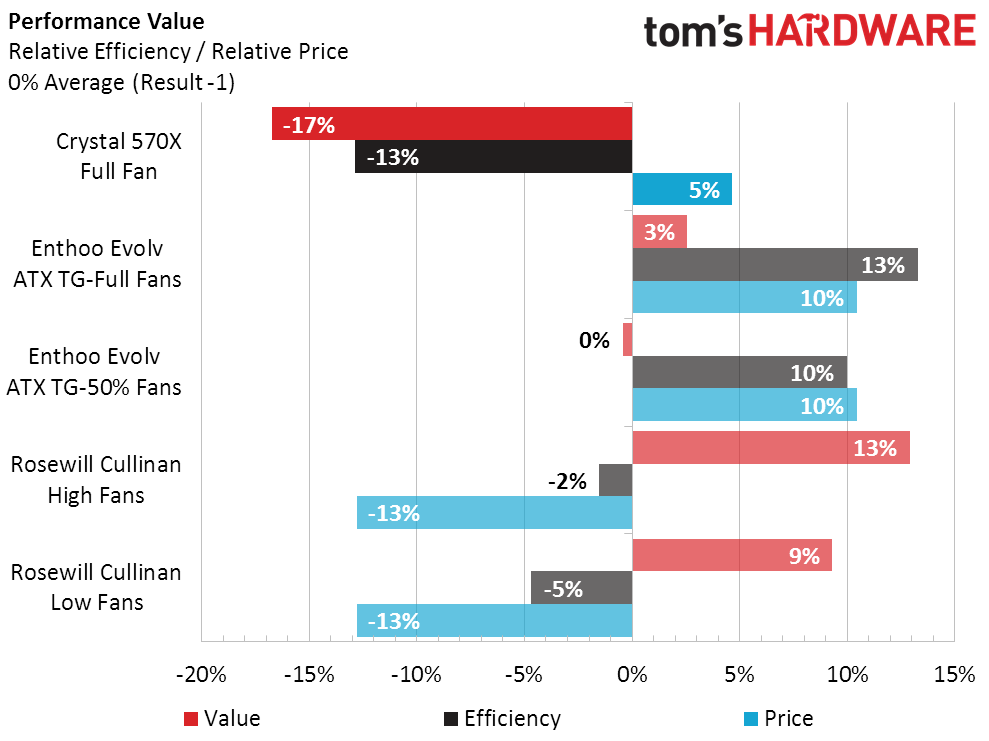Corsair Crystal 570X ATX Case Review
Corsair heats up the glass case market with tempered panels on the front, top, and both sides. We examine its extra features, functionality and performance.
Why you can trust Tom's Hardware
Building, Testing, And Evaluation
The Crystal 570X includes long radiator screws, fan screws, motherboard/short radiator screws, and a small pack of M3 screws for attaching 2.5” drives to the 3.5” trays.
Like the power supply shroud logo, the LED controller uses a SATA-style power connection. The Crystal 570X has no HDD LED or reset button, and its two USB 3.0 ports are fed by a single header. The fan motors are powered by three-pin, motherboard-controlled headers.
With approximately 15.7” of clearance between its front fans and slot panel, the only thing preventing the Crystal 570X from holding an EATX motherboard is the stepped-in section of motherboard tray that’s designed for the added thickness of 3.5” drives. Other than the 2.5” trays having slip-in latches, hardware installation follows the steps outlined in our How To Build A PC.
Here’s how the Crystal 570X compares to its two closest rivals in dimensions, features, and price:
We retain the hardware configuration from previous ATX case reviews to maintain result consistency. It includes a Core i7-5930K at a very small overclock and moderate voltage level cooled by the mid-sized Noctua NH-U12S, and a Gigabyte triple-fan GTX 970 with its fans cranked to full speed during load testing. The motherboard is set to a 115°C throttle point, and temperatures in the chart are above ambient (the thermal reading minus the room temperature).
Test Results
With great mass comes great latent heat, and glass doesn’t absorb (or release) that heat as quickly as most metals. While I generally take my final reading after the rate of temperature rise declines below one degree per hour, that process took around six hours in the Crystal 570X.
Though glass warms up slowly, the lack of any exhaust fan is a likely contributor to the 570X’s continued, noticeable temperature climb over many hours. Corsair specs this one to have an exhaust fan in its marketing material, and we expect that the company will probably follow through on that specification once a few sites publish data like this for the first batch of exhaust-fan-free cases.
Get Tom's Hardware's best news and in-depth reviews, straight to your inbox.
While noise levels don’t look great, the Crystal 570X did a fine job altering the pitch of that noise to a more white-noise-like “whoosh.” It was also very quiet at 50% fan speed, although the temperature issue prevented it from finishing that test under load.
I like a fan that’s able to spin up to super-airflow speeds and slow down to whisper quiet mode, but those only score well in reviews when we’re able to test them at those lower speeds.
Given the lack of a cheap exhaust fan in a pricey glass case, value comparisons aren’t really as fair as any of us would like. Even the top-performing Enthoo Evolv plays second fiddle in value to the far-cheaper Cullinan, but most users would prefer the Evolv’s higher quality. Similarly, I expect that many builders will use custom fan configurations to optimize their Crystal 570X, simply to take advantage of its aesthetic appeal.
MORE: Best Cases
MORE: All Case Content
MORE: In Pictures: 40 Unusual Computer Case Mods
Follow us on Facebook, Google+, RSS, Twitter and YouTube.
-
thundervore Oh geez.Reply
First it was the removal of front bays,
Then it was RGB,
Then Tempered Glass windows.
Now we have tempered glass for the rear panel? Why? -
Crashman Reply
Top, front, and both sides. Rear would be where the slots are :D18897820 said:Oh geez.
First it was the removal of front bays,
Then it was RGB,
Then Tempered Glass windows.
Now we have tempered glass for the rear panel? Why?
-
10tacle Man these things are awesome. I so want to go "glass" for my next build. However it's impracticable for those like me who regularly move and transport their gaming rigs around (different rooms, friend and family homes, etc.). It's not just about worrying about breaking glass but these things are also 5-10lbs heavier than a comparable traditional material case.Reply
One demerit for this case though for not having an exhaust fan from the factory. That's just one more thing to have to order and install separately.
-
JackNaylorPE Wow ... to quote Yogi, "Deja Vu all over again.Reply
Tempered Glass ... check
Fan Controller on back of MoBo tray ... check
Built in storage mounts on back of MoBo tray ... check
Builtin LED control ... check
Slide out dust filters, top and bottom ... check
PSU Shroud ... check
Don't really see the point of top and front glass ... kind makes it look like and induction cooktop ... maybe it could keep my coffee warm. :)
All kidding aside, I like that Corsair took a fair shot here, but as the Enthoo Luxe / Evolve cools better, is quieter, costs the same , fits bigger cards, has way more storage options, more cooling options, fits taller coolers and better support for water cooling, can't see why I would "go there".
Of course, 1st guy that puts one out that keep my coffee warm (radiator => hot plate heat exchanger), put me down for one ! -
thundervore Reply18898239 said:
Top, front, and both sides. Rear would be where the slots are :D18897820 said:Oh geez.
First it was the removal of front bays,
Then it was RGB,
Then Tempered Glass windows.
Now we have tempered glass for the rear panel? Why?
I meant back panel lol.
Honestly, who wants to show off the rats nest of cables tucked back there..........Not me.
I can forsee Amazon and Newegg refusing to carry this case after the first few sell out.
Can you imagine the damage claims from having this shipped from Amazon and Newegg? First the case have to get to the merchant intact, then they have to get it to the customer intact. As someone who worked for UPS as a loader, one of those three glass pieces will be shattered upon final delivery lmao -
Justiceinacan Wow a corsair case that actually supports a 360mm radiator? Finally the enthusiasts got to them!Reply -
JackNaylorPE Maybe someday they will accommodate 140mm wide (420) .. Luxe tempered does 420 on top.Reply
I do wish they'd give the dimensions instead of this 3 x 120mm stuff... radiators have reservoirs, the Swiftech and EK AIOs have pumps and that makes them all longer then x x 120 or 140mm... also have seen some 140mm rads fit width wise and others not. -
JackNaylorPE Reply18898239 said:Top, front, and both sides. Rear would be where the slots are :D
How do we lobby for the add-on option to turn the top one into a hot plate
Would be kinda cool to have glass etched into those circular rings ya see on induction cooktops
Hmm looks like two large coffee mugs, a space for my Big Mac and fries ... and last space for my goldfish's bowl :)
... sounds like an idea for a "Case Mod" article for ya ! ... maybe could publish on day after March 31st
-
alidan well site ate my commentReply
Thermaltake Core X9
If it wasn't for the see through side this would be the perfect case for me, as it stands ill put either mylar over it, or some black air brushed acrylic and clear coat.
I sleep in the same room as my computer, I don't want any more lights then needed.
